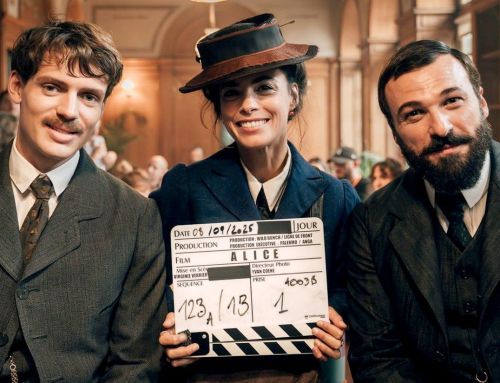CANNES FESTIVAL-“Beasts of the Southern Wild”
The reserve of goodwill directed at filmmaker Benh Zeitlin is considerable. He’s young (in his early twenties), he’s got a film to Cannes which he wrote and directed, and, in a gung-ho attempt at realism he chose an extremely difficult location to shoot his film “Beasts of the Southern Wild” in.
“Beasts” was shown here at the Cannes Festival yesterday. The response, as far as I had time to gauge, seemed positive.
The story is simple.
Hushpuppy, a young girl of about eight, has to come to terms with both a father who’s dying of a terminal disease and her own survival in an unfriendly environment.
There’s an eagerness concerning “Beasts,” the buzz in Cannes (Robert Ebert calls it “the best film I’ve seen all year”) echoing the positive response from the last Sundance Festival. It’s a sort of ritualistic admiration which often accompanies gutsy filmmakers as they unveil their first major feature film project. To be sure, Zeitlin accomplished a tour-de-force with “Beasts”—the visual effects and intricacy of certain scenes is incredible—but the movie will hold limited appeal for the experienced filmgoer (I call this the “Slumdog Millionaire” syndrome, frothy and feel-good during, and then the tide recedes quickly after that–in other words, the movie has little chance of living within you for a long time, like a Chaplin, or a “Citizen Kane” might).
“Beasts” is filmed in a realistic style in that especially chaotic piece of America’s topography known as the bayou (the dreadful piece of land where hell collided with earth is called Terrebone Parrish).
There’s an urgency in Zeitlin’s way of telling his story, an eagerness to show how vulnerable his characters are, as if to say, “I want you to feel rich empathy for my characters, look at them, aren’t they just so exposed in their predicament?” Is that what others reacted to?
The father’s weary and worn-out act (he fishes his dinner out the river and makes preparations for an approaching storm) counterweighs his daughter’s imaginative eagerness and her cute kid-view of the world. They live in separate shacks, a few feet away from each other, which were built with found objects and planks of wood, not one being similar to the other).
Wink (the father) throws furniture around in fits of anger.
I have the distinct impression that American filmmakers like Zeitlin mistake a character’s wrathful moments for dramatic heft. Anger begets anger, nothing else. And too much throwing around of furniture and rolling on the floor drunk merely delays whatever good may come next.
Hushpuppy is nothing if loveable all-cuteness, and you want to rescue her because she’s so vulnerable, with that father who’s dying and a bayou about to be taken over by a storm. But she’s not nearly enough of a character for us to care and her father, who’s extremely primitive in his interactions with others, is the same or worse.
And with that, “Beasts” failed to make a lasting impression; that said, I would keep an eye on Benh Zeitlin as it’s clear from his directing and visual style (and his chutzpah) that he could be a very effective and noted filmmaker.






